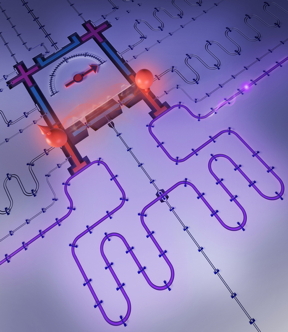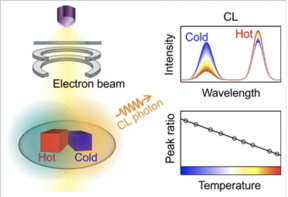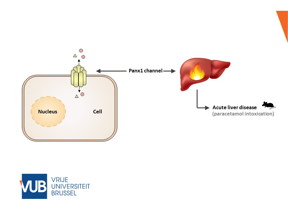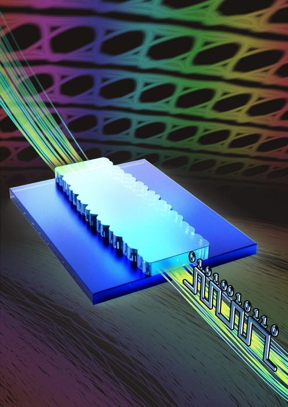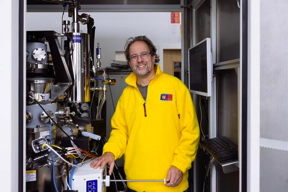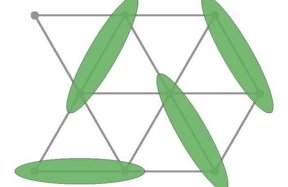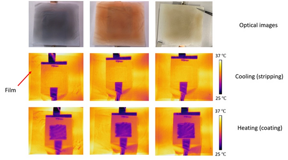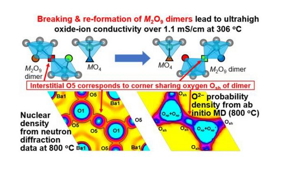Home > Press > New chip opens door to AI computing at light speed
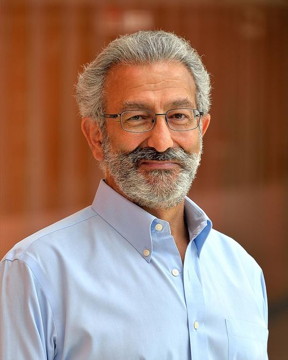 |
| Nader Engheta, H. Nedwill Ramsey Professor, Penn Engineering CREDIT Felice Macera |
Abstract:
Penn Engineers have developed a new chip that uses light waves, rather than electricity, to perform the complex math essential to training AI. The chip has the potential to radically accelerate the processing speed of computers while also reducing their energy consumption.
New chip opens door to AI computing at light speed
Philadelphia, PA | Posted on February 16th, 2024
The silicon-photonic (SiPh) chip’s design is the first to bring together Benjamin Franklin Medal Laureate and H. Nedwill Ramsey Professor Nader Engheta’s pioneering research in manipulating materials at the nanoscale to perform mathematical computations using light — the fastest possible means of communication — with the SiPh platform, which uses silicon, the cheap, abundant element used to mass-produce computer chips.
The interaction of light waves with matter represents one possible avenue for developing computers that supersede the limitations of today’s chips, which are essentially based on the same principles as chips from the earliest days of the computing revolution in the 1960s.
In a paper in Nature Photonics, Engheta’s group, together with that of Firooz Aflatouni, Associate Professor in Electrical and Systems Engineering, describes the development of the new chip. “We decided to join forces,” says Engheta, leveraging the fact that Aflatouni’s research group has pioneered nanoscale silicon devices.
Their goal was to develop a platform for performing what is known as vector-matrix multiplication, a core mathematical operation in the development and function of neural networks, the computer architecture that powers today’s AI tools.
Instead of using a silicon wafer of uniform height, explains Engheta, “you make the silicon thinner, say 150 nanometers,” but only in specific regions. Those variations in height — without the addition of any other materials — provide a means of controlling the propagation of light through the chip, since the variations in height can be distributed to cause light to scatter in specific patterns, allowing the chip to perform mathematical calculations at the speed of light.
Due to the constraints imposed by the commercial foundry that produced the chips, Aflatouni says, this design is already ready for commercial applications, and could potentially be adapted for use in graphics processing units (GPUs), the demand for which has skyrocketed with the widespread interest in developing new AI systems. “They can adopt the Silicon Photonics platform as an add-on,” says Aflatouni, “and then you could speed up training and classification.”
In addition to faster speed and less energy consumption, Engheta and Aflatouni’s chip has privacy advantages: because many computations can happen simultaneously, there will be no need to store sensitive information in a computer’s working memory, rendering a future computer powered by such technology virtually unhackable. “No one can hack into a non-existing memory to access your information,” says Aflatouni.
This study was conducted at the University of Pennsylvania School of Engineering and Applied science and supported in part by a grant from the U.S. Air Force Office of Scientific Research’s (AFOSR) Multidisciplinary University Research Initiative (MURI) to Engheta (FA9550-21-1-0312) and a grant from the U.S. Office of Naval Research (ONR) to Afaltouni (N00014-19-1-2248).
Other co-authors include Vahid Nikkhah, Ali Pirmoradi, Farshid Ashtiani and Brian Edwards of Penn Engineering.
####
For more information, please click here
Contacts:
Media Contacts
Ian Scheffler
University of Pennsylvania School of Engineering and Applied Science
Holly Wojcik
University of Pennsylvania School of Engineering and Applied Science
Office: 215-573-4607
Expert Contact
Nader Engheta
University of Pennsylvania School of Engineering and Applied Science
Office: +1-215-898-9777
@https://twitter.com/naderengheta?lang=en
Copyright © University of Pennsylvania School of Engineering and Applied Science
If you have a comment, please Contact us.
Issuers of news releases, not 7th Wave, Inc. or Nanotechnology Now, are solely responsible for the accuracy of the content.
| Related Links |
| Related News Press |
News and information
![]() Detecting breast cancer through a spit test February 16th, 2024
Detecting breast cancer through a spit test February 16th, 2024
![]() HKUST researchers develop new integration technique for efficient coupling of III-V and silicon February 16th, 2024
HKUST researchers develop new integration technique for efficient coupling of III-V and silicon February 16th, 2024
![]() Under pressure – space exploration in our time: Advancing space exploration through diverse collaborations and ethical policies February 16th, 2024
Under pressure – space exploration in our time: Advancing space exploration through diverse collaborations and ethical policies February 16th, 2024
Nanofabrication
![]() Researchers develop technique to synthesize water-soluble alloy nanoclusters January 12th, 2024
Researchers develop technique to synthesize water-soluble alloy nanoclusters January 12th, 2024
![]() Shrinking hydrogels enlarge nanofabrication options: Researchers from Pittsburgh and Hong Kong print intricate, 2D and 3D patterns December 29th, 2022
Shrinking hydrogels enlarge nanofabrication options: Researchers from Pittsburgh and Hong Kong print intricate, 2D and 3D patterns December 29th, 2022
![]() Semi-nonlinear etchless lithium niobate waveguide with bound states in the continuum November 4th, 2022
Semi-nonlinear etchless lithium niobate waveguide with bound states in the continuum November 4th, 2022
Govt.-Legislation/Regulation/Funding/Policy
![]() A battery’s hopping ions remember where they’ve been: Seen in atomic detail, the seemingly smooth flow of ions through a battery’s electrolyte is surprisingly complicated February 16th, 2024
A battery’s hopping ions remember where they’ve been: Seen in atomic detail, the seemingly smooth flow of ions through a battery’s electrolyte is surprisingly complicated February 16th, 2024
![]() NRL discovers two-dimensional waveguides February 16th, 2024
NRL discovers two-dimensional waveguides February 16th, 2024
Possible Futures
![]() Detecting breast cancer through a spit test February 16th, 2024
Detecting breast cancer through a spit test February 16th, 2024
![]() A battery’s hopping ions remember where they’ve been: Seen in atomic detail, the seemingly smooth flow of ions through a battery’s electrolyte is surprisingly complicated February 16th, 2024
A battery’s hopping ions remember where they’ve been: Seen in atomic detail, the seemingly smooth flow of ions through a battery’s electrolyte is surprisingly complicated February 16th, 2024
![]() NRL discovers two-dimensional waveguides February 16th, 2024
NRL discovers two-dimensional waveguides February 16th, 2024
Chip Technology
![]() HKUST researchers develop new integration technique for efficient coupling of III-V and silicon February 16th, 2024
HKUST researchers develop new integration technique for efficient coupling of III-V and silicon February 16th, 2024
![]() NRL discovers two-dimensional waveguides February 16th, 2024
NRL discovers two-dimensional waveguides February 16th, 2024
![]() ‘Sudden death’ of quantum fluctuations defies current theories of superconductivity: Study challenges the conventional wisdom of superconducting quantum transitions January 12th, 2024
‘Sudden death’ of quantum fluctuations defies current theories of superconductivity: Study challenges the conventional wisdom of superconducting quantum transitions January 12th, 2024
Optical computing/Photonic computing
![]() HKUST researchers develop new integration technique for efficient coupling of III-V and silicon February 16th, 2024
HKUST researchers develop new integration technique for efficient coupling of III-V and silicon February 16th, 2024
![]() NRL discovers two-dimensional waveguides February 16th, 2024
NRL discovers two-dimensional waveguides February 16th, 2024
![]() Thermal impact of 3D stacking photonic and electronic chips: Researchers investigate how the thermal penalty of 3D integration can be minimized December 8th, 2023
Thermal impact of 3D stacking photonic and electronic chips: Researchers investigate how the thermal penalty of 3D integration can be minimized December 8th, 2023
![]() Successful morphing of inorganic perovskites without damaging their functional properties October 6th, 2023
Successful morphing of inorganic perovskites without damaging their functional properties October 6th, 2023
Discoveries
![]() HKUST researchers develop new integration technique for efficient coupling of III-V and silicon February 16th, 2024
HKUST researchers develop new integration technique for efficient coupling of III-V and silicon February 16th, 2024
![]() Superbug killer: New synthetic molecule highly effective against drug-resistant bacteria February 16th, 2024
Superbug killer: New synthetic molecule highly effective against drug-resistant bacteria February 16th, 2024
Announcements
![]() Detecting breast cancer through a spit test February 16th, 2024
Detecting breast cancer through a spit test February 16th, 2024
![]() HKUST researchers develop new integration technique for efficient coupling of III-V and silicon February 16th, 2024
HKUST researchers develop new integration technique for efficient coupling of III-V and silicon February 16th, 2024
![]() Superbug killer: New synthetic molecule highly effective against drug-resistant bacteria February 16th, 2024
Superbug killer: New synthetic molecule highly effective against drug-resistant bacteria February 16th, 2024
Interviews/Book Reviews/Essays/Reports/Podcasts/Journals/White papers/Posters
![]() Detecting breast cancer through a spit test February 16th, 2024
Detecting breast cancer through a spit test February 16th, 2024
![]() HKUST researchers develop new integration technique for efficient coupling of III-V and silicon February 16th, 2024
HKUST researchers develop new integration technique for efficient coupling of III-V and silicon February 16th, 2024
Military
![]() NRL discovers two-dimensional waveguides February 16th, 2024
NRL discovers two-dimensional waveguides February 16th, 2024
![]() ‘Sudden death’ of quantum fluctuations defies current theories of superconductivity: Study challenges the conventional wisdom of superconducting quantum transitions January 12th, 2024
‘Sudden death’ of quantum fluctuations defies current theories of superconductivity: Study challenges the conventional wisdom of superconducting quantum transitions January 12th, 2024
![]() World’s first logical quantum processor: Key step toward reliable quantum computing December 8th, 2023
World’s first logical quantum processor: Key step toward reliable quantum computing December 8th, 2023
![]() Inverted perovskite solar cell breaks 25% efficiency record: Researchers improve cell efficiency using a combination of molecules to address different November 17th, 2023
Inverted perovskite solar cell breaks 25% efficiency record: Researchers improve cell efficiency using a combination of molecules to address different November 17th, 2023
Artificial Intelligence
![]() HKUST researchers develop new integration technique for efficient coupling of III-V and silicon February 16th, 2024
HKUST researchers develop new integration technique for efficient coupling of III-V and silicon February 16th, 2024
![]() 2D material reshapes 3D electronics for AI hardware December 8th, 2023
2D material reshapes 3D electronics for AI hardware December 8th, 2023
![]() Data can now be processed at the speed of light! April 14th, 2023
Data can now be processed at the speed of light! April 14th, 2023
Photonics/Optics/Lasers
![]() HKUST researchers develop new integration technique for efficient coupling of III-V and silicon February 16th, 2024
HKUST researchers develop new integration technique for efficient coupling of III-V and silicon February 16th, 2024
![]() A battery’s hopping ions remember where they’ve been: Seen in atomic detail, the seemingly smooth flow of ions through a battery’s electrolyte is surprisingly complicated February 16th, 2024
A battery’s hopping ions remember where they’ve been: Seen in atomic detail, the seemingly smooth flow of ions through a battery’s electrolyte is surprisingly complicated February 16th, 2024
![]() NRL discovers two-dimensional waveguides February 16th, 2024
NRL discovers two-dimensional waveguides February 16th, 2024
![]() Development of zinc oxide nanopagoda array photoelectrode: photoelectrochemical water-splitting hydrogen production January 12th, 2024
Development of zinc oxide nanopagoda array photoelectrode: photoelectrochemical water-splitting hydrogen production January 12th, 2024
- SEO Powered Content & PR Distribution. Get Amplified Today.
- PlatoData.Network Vertical Generative Ai. Empower Yourself. Access Here.
- PlatoAiStream. Web3 Intelligence. Knowledge Amplified. Access Here.
- PlatoESG. Carbon, CleanTech, Energy, Environment, Solar, Waste Management. Access Here.
- PlatoHealth. Biotech and Clinical Trials Intelligence. Access Here.
- Source: http://www.nanotech-now.com/news.cgi?story_id=57453
- :has
- :is
- :not
- :where
- $UP
- 10
- 12th
- 14th
- 150
- 16th
- 17th
- 27
- 2D
- 3d
- 4
- 4th
- 6th
- 7th
- 8th
- 9th
- a
- abundant
- accelerate
- access
- accuracy
- acute
- adapted
- Add-on
- addition
- address
- adopt
- advancing
- advantages
- against
- AI
- AI systems
- AIR
- Air Force
- Allowing
- Alloy
- already
- also
- an
- and
- any
- applications
- applied
- April
- architecture
- ARE
- Array
- AS
- Associate
- At
- Australia
- Avenue
- based
- batteries
- BE
- because
- been
- Benjamin
- bound
- breaks
- Breast cancer
- Brian
- bring
- but
- by
- calculations
- CAN
- Cancer
- Cause
- cell
- Center
- CGI
- challenges
- cheap
- chip
- Chips
- classification
- click
- collaborations
- COM
- combination
- comment
- commercial
- Communication
- complex
- computations
- computer
- computers
- computing
- conducted
- conductor
- conducts
- constraints
- consumption
- content
- controlling
- conventional
- Core
- could
- created
- Creating
- credit
- Current
- damaging
- Days
- Death
- December
- decided
- del
- Demand
- describes
- Design
- detail
- develop
- developed
- developing
- Development
- Devices
- direction
- discovered
- Discovers
- discovery
- distributed
- diverse
- Door
- earliest
- edwards
- Effective
- efficiency
- efficient
- electricity
- electrolyte
- Electronic
- Electronics
- element
- end
- energy
- Energy Consumption
- Engineering
- Engineers
- enlarge
- essential
- essentially
- Ether (ETH)
- ethical
- Explains
- exploration
- fact
- far
- faster
- fastest
- February
- First
- flow
- fluctuations
- For
- Force
- Forces
- Foundry
- franklin
- from
- function
- functional
- further
- future
- gif
- Global
- goal
- GPUs
- grant
- graphics
- Group
- hack
- happen
- Have
- Health
- height
- highly
- Hong
- Hong Kong
- How
- http
- HTTPS
- huge
- human
- hydrogen
- if
- Impact
- imposed
- improve
- in
- Inc.
- include
- information
- Initiative
- inorganic
- integration
- interaction
- interest
- into
- intricate
- investigate
- January
- join
- jpg
- Key
- killer
- known
- Kong
- less
- Level
- leveraging
- li
- light
- limitations
- links
- lithium
- logical
- make
- manipulating
- many
- material
- materials
- math
- mathematical
- Matter
- means
- Memory
- molecule
- more
- multidisciplinary
- multiple
- multiplication
- nano
- nanotechnology
- Nature
- Need
- net
- networks
- Neural
- neural networks
- New
- new chip
- New Zealand
- news
- no
- November
- now
- october
- of
- Office
- on
- ONE
- only
- opens
- operation
- Options
- or
- organic
- Other
- our
- Paper
- part
- particle
- patterns
- Penn
- Pennsylvania
- perform
- performing
- philadelphia
- PHP
- pioneered
- Pioneering
- pittsburgh
- platform
- plato
- Plato Data Intelligence
- PlatoData
- please
- possible
- Post
- posted
- potential
- potentially
- powered
- powers
- press
- Press Release
- pressure
- principles
- privacy
- processed
- processing
- Processor
- produce
- Produced
- Professor
- propagation
- provide
- Quantum
- radically
- rapidly
- rather
- ready
- record
- reducing
- regions
- release
- Releases
- reliable
- remember
- rendering
- represents
- research
- research group
- researchers
- reshapes
- responsible
- return
- Revolution
- revolutionary
- Risk
- s
- safely
- same
- Save
- say
- says
- School
- School of Engineering
- Science
- scientific
- scientists
- Screen
- Search
- seemingly
- seen
- Semiconductors
- sensitive
- Share
- Shows
- significantly
- Silicon
- simultaneously
- since
- smooth
- snowflakes
- solar
- solely
- solid
- something
- Space
- space exploration
- specific
- speed
- stacking
- start
- States
- Step
- store
- Study
- submit
- such
- sudden
- Superconductivity
- Supported
- surprisingly
- sustainable
- synthesize
- synthetic
- Systems
- tackle
- technique
- Technology
- than
- that
- The
- their
- then
- There.
- thermal
- this
- those
- Through
- time
- tiny
- to
- today’s
- together
- tools
- toward
- towards
- Training
- trial
- u.s.
- U.S. Air Force
- Unexpected
- units
- university
- University of Pennsylvania
- unlocks
- us
- use
- used
- uses
- using
- variations
- virtually
- was
- Waste
- Water
- Wave
- waves
- What
- What is
- which
- while
- widespread
- will
- wisdom
- with
- without
- working
- Yahoo
- you
- Your
- Zealand
- zephyrnet












